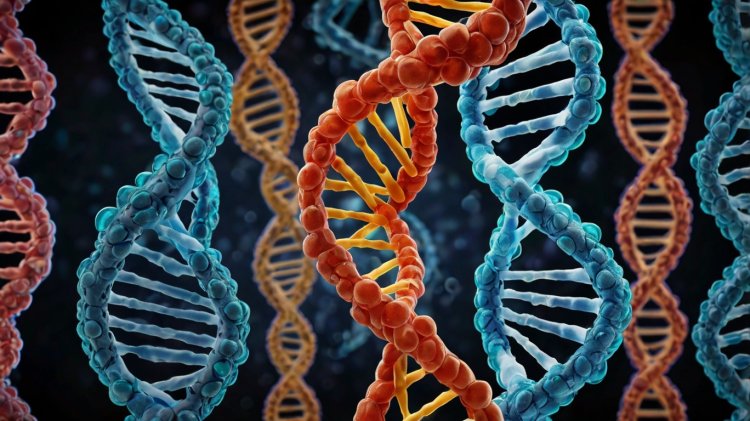Understanding the Genetics of Rett Syndrome: Causes, Diagnosis, and Emerging Treatments
Rett syndrome is a rare neurological disorder with a strong genetic basis. This guide dives into the genetics behind Rett syndrome, including its primary causes, the role of X-linked inheritance, and how specific mutations in the MECP2 gene lead to its development. You'll also explore the latest advancements in gene therapies that offer hope for improved treatments. Additionally, learn how genetic testing plays a crucial role in early diagnosis, helping families and healthcare providers identify the condition and implement effective management strategies. Stay informed about ongoing research and how it’s shaping the future of Rett syndrome care.

Rett syndrome is a rare neurodevelopmental disorder that primarily affects females and is caused by genetic mutations. This condition disrupts normal development, leading to significant challenges in motor skills, communication, and cognition. Understanding the genetics behind Rett syndrome offers insights into its diagnosis, inheritance, and emerging treatment options.
The Genetics Behind Rett Syndrome
Genes Involved in Rett Syndrome
The primary genetic cause of Rett syndrome is mutations in the MECP2 gene located on the X chromosome. This gene encodes the MeCP2 protein, which plays a crucial role in brain function by regulating the activity of other genes. High concentrations of MeCP2 protein are essential for normal neurological development.
-
Mutations in MECP2:
-
Responsible for about 95% of typical Rett syndrome cases.
-
Disrupt the production or function of the MeCP2 protein, impairing normal brain signaling and development.
-
-
Other Genes:
-
In atypical cases, mutations in CDKL5 and FOXG1 genes are implicated.
-
These mutations lead to variations in symptoms and disease severity.
-
The Role of MECP2 Mutations
While the exact mechanisms remain unclear, MECP2 mutations result in impaired regulation of gene expression in brain cells. This disruption affects neural communication and development, causing the hallmark symptoms of Rett syndrome.
Rare Cases in Males
Rett syndrome is primarily seen in females due to the presence of two X chromosomes. Males with MECP2 mutations typically have severe symptoms and may not survive infancy. However, rare cases of males with milder mutations or additional chromosomal abnormalities have been reported.
Inheritance Patterns of Rett Syndrome
Rett syndrome follows an X-linked dominant inheritance pattern, but most cases are not inherited.
-
Spontaneous Mutations:
-
Over 99% of Rett syndrome cases result from spontaneous mutations, often in a single sperm cell before conception.
-
-
Rare Inherited Cases:
-
In extremely rare instances, females may inherit the mutation from asymptomatic carrier mothers. This occurs when the mutated X chromosome is inactivated.
-
Diagnosing Rett Syndrome Through Genetics
Early diagnosis is crucial for managing Rett syndrome. Genetic testing plays a vital role in identifying the underlying mutations.
Steps in Diagnosis
-
Developmental History:
-
Assessment of developmental milestones, regression, and family medical history.
-
-
Neurological and Physical Exams:
-
Evaluation of hand movements, motor skills, and other symptoms characteristic of Rett syndrome.
-
-
Genetic Testing:
-
MECP2 Gene Analysis: Identifies common Rett syndrome mutations.
-
Expanded Genetic Testing: Detects atypical mutations in CDKL5 or FOXG1.
-
Prenatal Testing
Although rare, prenatal diagnosis is possible through procedures like amniocentesis, especially if a parent is known to carry a mutation.
Genetic Treatments and Emerging Research
While there is no cure for Rett syndrome, genetic research is paving the way for innovative treatments.
Approved Medications
-
Trofinetide (FDA-approved in 2023):
-
Reduces symptom severity by targeting underlying neurological deficits.
-
Gene Therapy
Research is underway to correct the root genetic causes:
-
Gene Replacement Therapy:
-
Introduces functional MECP2 genes using viral vectors to compensate for the defective gene.
-
-
X-Chromosome Reactivation:
-
Focuses on activating the healthy MECP2 copy in females.
-
Clinical Trials
Ongoing trials are exploring:
-
Delivery of shortened MECP2 genes.
-
Techniques to enhance brain cell function.
-
Long-term safety and efficacy of gene therapies.
Frequently Asked Questions
How Common is Rett Syndrome?
Rett syndrome affects approximately 1 in 10,000 to 20,000 live female births. Male cases are extremely rare, with fewer than 100 reported worldwide.
At What Age Do Symptoms Appear?
Symptoms typically emerge between 6 and 18 months, coinciding with developmental regression.
Can Rett Syndrome Be Detected Before Birth?
Yes, prenatal genetic testing can identify Rett syndrome mutations, though this is uncommon due to the spontaneous nature of most cases.
Are Genetic Treatments Safe?
While genetic treatments show promise, they are still in experimental stages. Researchers are closely monitoring their long-term safety and effectiveness.
Does Rett Syndrome Run in Families?
In the vast majority of cases, Rett syndrome is not inherited but occurs due to spontaneous genetic mutations.
Conclusion
Rett syndrome is a complex genetic disorder primarily caused by mutations in the MECP2 gene. Advances in genetic testing have enhanced diagnostic accuracy, while groundbreaking research in gene therapy offers hope for future treatments. Early intervention, accurate diagnosis, and ongoing research are critical for improving outcomes and quality of life for individuals with Rett syndrome and their families. If you notice developmental concerns in your child, consult a healthcare provider promptly for evaluation and support









